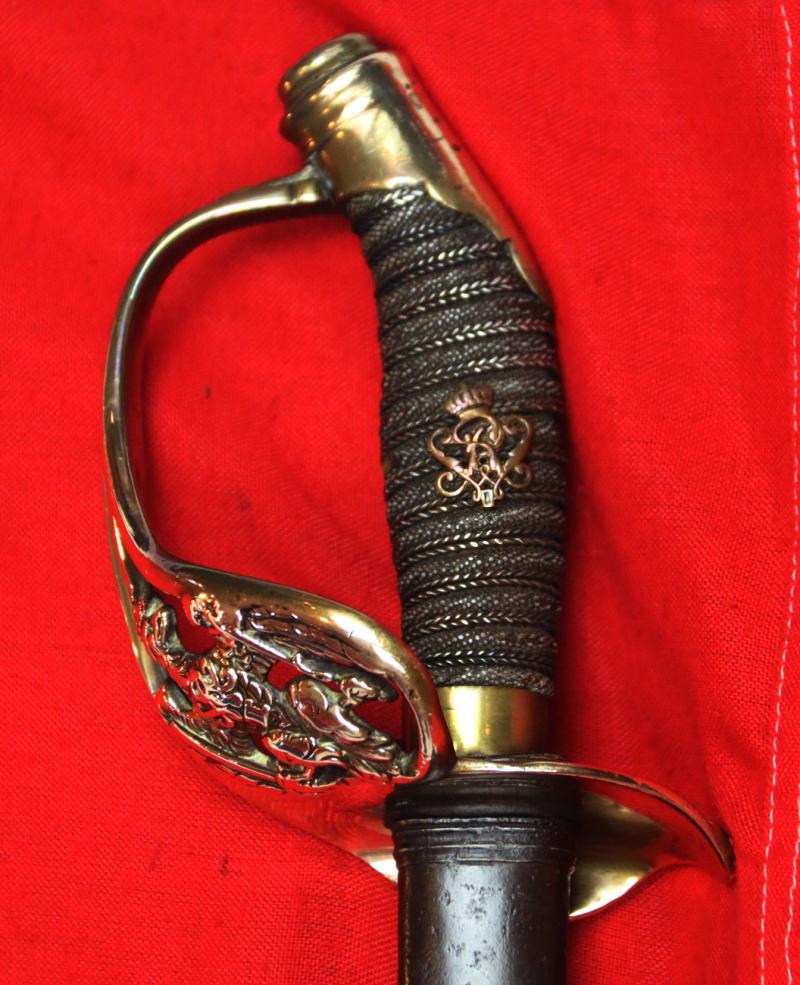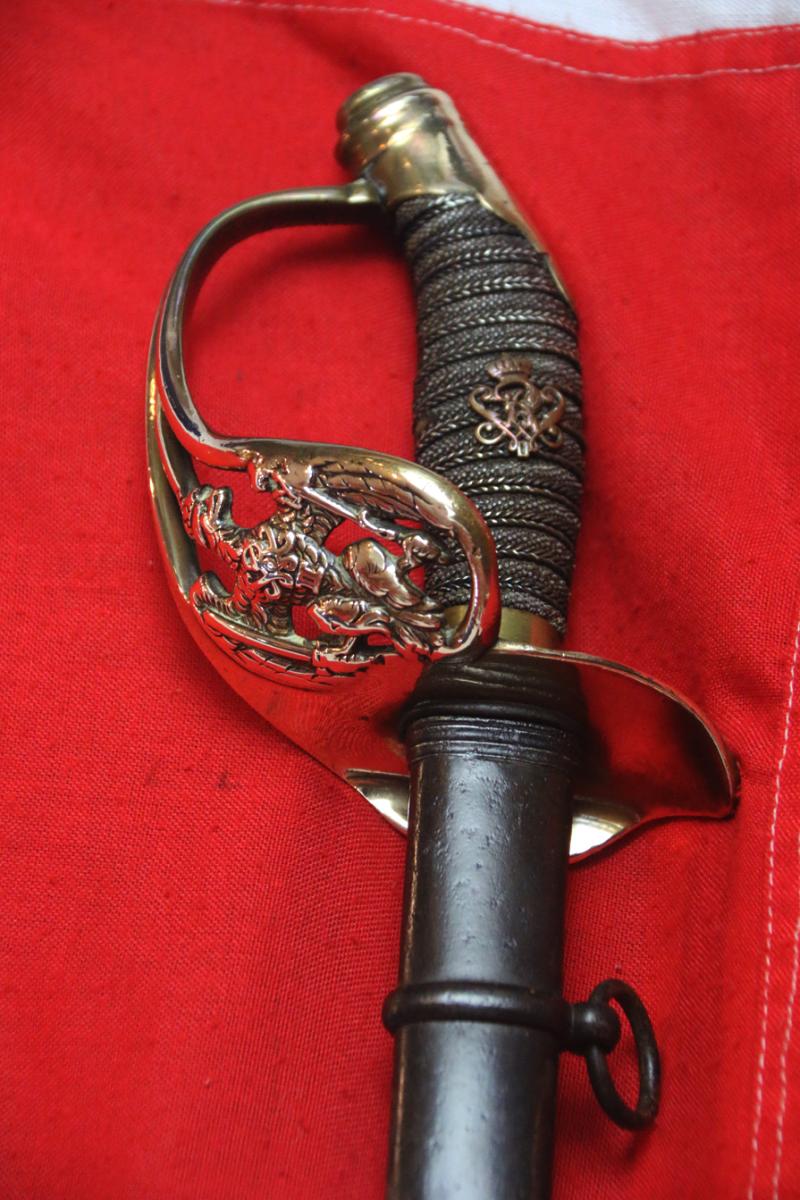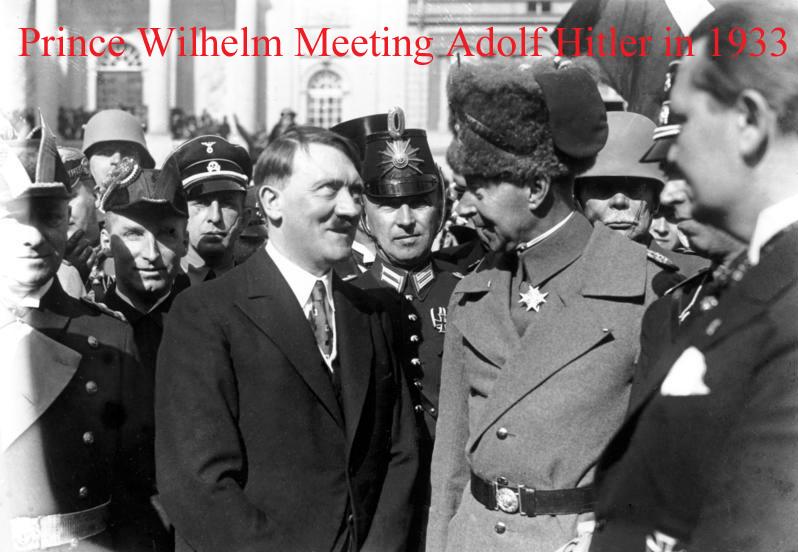Very Fine Regimental Officer's Sword WW1 of the 5th Prussian Jäger Battalion (1st Silesian). Imperial Prussian Eagle Guard With Crest of Kaiser Willhelm IInd. Commanded By Crown Prince Wilhelm of Prussia the Heir of Kaiser Wilhelm IInd. Sword No 1
Stamped on the guard for the first officer of the 5th Jäger Battalion, the 1st Company, Sword Number 1. Stamped on the hilt, 5.J.1.1, in it it’s matching numbered scabbard. Used in the 1914 Schlieffen Plan, the Battle of the Ardennes, and the Battle of Verdun and Marne. Overall the sword is in excellent condition, with its original multi wire bound sharkskin grip fully original and intact. Bronze guard, with the personal monogram of the Kaiser upon the grip, and guard depicting the Imperial Prussian Eagle, pieced and in relief. Double fullered blade and it’s original all steel combat scabbard. The blade bears the Kaiser Wilhelmi W Crown proof inspection mark
The 5th Prussian Jäger Battalion (1st Silesian)
AKA The Jäger-Batallion von Neumann (1.Schlesisches ) Nr.5 was formed in 1808 as the 1. Schützen-Abteilung (Schlesische). They fought Napoleon at the Battles of Leipzig and Waterloo, Revolutionaries in Baden in 1849, Austria- Hungary at Königgrätz in 1866 and France again at Wörth and Sedan in 1870. Since 1901 Archduke Ferdinand Carl of Austria-Hungary was honorary Colonel in Chief of the battalion.
In 1914 they were garrisoned at Hirschberg (modern Jelenia Góra, Poland) and formed part of the V Army Corps. During the First World War they served on the Western Front, notably at the Battles of the Marne and Verdun.
On mobilisation, V Corps was assigned to the 5th Army forming part of centre of the forces for the Schlieffen Plan offensive in August 1914 on the Western Front.
In August 1914 the command of 5th Army was assigned to Crown Prince Wilhelm of Germany, heir to the Hohenzollern throne, with General Schmidt von Knobelsdorf serving as his chief of staff, and would remain thus until late 1916. The opening hostilities on the Western Front saw the Crown Prince's 5th Army, along with the neighboring 4th Army (commanded by Albrecht, Duke of Württemberg), acting at the center of the Schlieffen plan attack into Belgium and France. On 21 August 1914, in what became known as the Battle of the Ardennes, the 4th and 5th Armies advanced into the Ardennes to counter a thrust by the French 3rd and 4th Armies. Over the next two days 5th Army played a major part in halting the opposing French forces. By 23 August, after taking heavy losses and being outmaneuvered strategically, the two French armies were driven into retreat. Following the German 5th Army's victory in the Battle of the Ardennes it moved to Verdun, where it would remain until 1918. In February 1916 the Crown Prince's 5th Army would launch Operation Gericht, the German offensive that began the Battle of Verdun, one of the bloodiest and longest battles in history. Late in 1916, after suffering terrible losses in its efforts at Verdun, General Max von Gallwitz assumed control of 5th Army. Before the close of the war 5th Army fought in several noteworthy actions, including the Battle of Saint-Mihiel, in September 1918, when it was defeated by the American Expeditionary Force under John J. Pershing. The Fifth Army continued to oppose the AEF's Meuse-Argonne Offensive until the Armistice of 11 November 1918. At the end of the war it was serving as part of Heeresgruppe Gallwitz
It was still in existence at the end of the war in Armee-Abteilung C, Heeresgruppe Gallwitz on the Western Front.
Wilhelm, German Crown Prince, Crown Prince of Prussia (Friedrich Wilhelm Victor August Ernst; 6 May 1882 – 20 July 1951) was the eldest child of the last Kaiser, Wilhelm II, German Emperor, and his consort Augusta Victoria of Schleswig-Holstein, and thus a great-grandson of Queen Victoria, and distant cousin to many British royals, such as Queen Elizabeth II. As Emperor Wilhelm's heir, he was the last Crown Prince of the German Empire and the Kingdom of Prussia, until the abolition of the monarchy.
Wilhelm became crown prince at the age of six in 1888, when his grandfather Frederick III died and his father became emperor. He was crown prince for 30 years until the fall of the empire on 9 November 1918. During World War I, he commanded the 5th Army from 1914 to 1916 and was commander of the Army Group German Crown Prince for the remainder of the war. After his return to Germany in 1923, he fought the Weimar Republic and campaigned for the reintroduction of the monarchy in Germany. After his plans to become president had been blocked by his father, Wilhelm supported Adolf Hitler's rise to power, but when Wilhelm realised that Hitler had no intention of restoring the monarchy, their relationship cooled. Wilhelm became head of the House of Hohenzollern on 4 June 1941 following the death of his father and held the position until his own death on 20 July 1951.
Small denting to the scabbard.
Code: 25235
995.00 GBP









